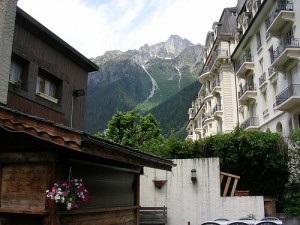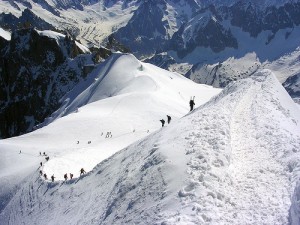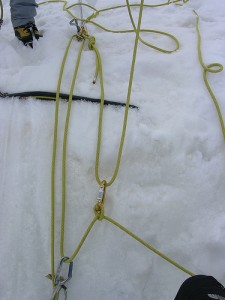When your German friends invite you to take a walk on the beach, ask how many tens of kilometers they plan to march before you answer.
We took a break from our workation* in Chamonix to visit our dear friends Uwe and Frauke in Hamburg last weekend.
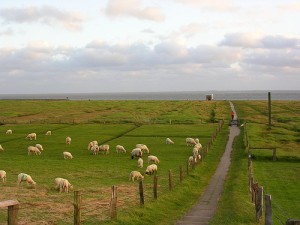
Lambs (and sheep!) on Hamburger Hallig
Uwe decided that after spending so much time in the Alps, we were due for a trip to the beach, and I agreed. He planned a weekend at the North Sea that included a stroll on the beach, a hike across tidal flats to an island, and dining on a local specialty that’s only available at this time of the year.
Friday evening we left Hamburg’s luxe riverside homes behind for the area near Sylt, which Uwe said was one of the most beautiful (and popular) islands in Germany. But before we headed to the island, we had a mandatory stop at Hamburger Hallig–but not for hamburgers. For lamb.
Uwe had been talking about the “nice, juicy little lambs” since I asked if we could visit. They’re special, he said, because they feast on grasses watered by the high tide and therefore take on the sea’s salty flavor.
As we approached the restaurant–and unassuming farmhouse perched hopefully atop the highest part of a hallig, a German word for the miniscule islands just off the coast–Frauke and Uwe had a quick debate in German and told us we were going to pay to drive right up to the farmhouse, even though they usually walk or rent bikes. Was Uwe too anxious for his juicy lamb to hike or bike? The wind was howling off the sea, so I was happy not to pedal a bike into it and said so. “Oh, the wind is not a problem,” Frauke said. “But if it rains, we don’t want to have to walk all the way back here in it.”
This should have been my first clue about the hearty constitution of my German friends and the activities and weather they think are “not a problem.”

Jeremy in the wind on the North Sea
So as not to miss the juiciest part of the lamb, the leg, we rushed in just as the buffet began, quickly ordered beers and apfelschorles, and snuck around the hostess who told us to wait, a large group would get to go before us. The lamb was juicy, and it was available in every cut and cooked in every conceivable way. I woffed down most of two plates before calling it quits–Uwe ate three and cleaned his plate each time.
Uwe and Frauke swore us to secrecy about their juicy little lambs and made me promise not to publish the name of the restaurant. It is little known, out of the way, and only hosts the lamb buffet on Friday nights for a few weeks in June and July. If you absolutely must know, drop me a line.
The next day, we headed to Sylt for a “nice walk along the beach.” The wind was still howling, but the sun was out.
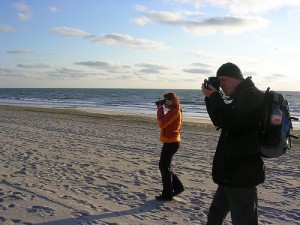
Uwe and Frauke shooting pictures of the Red Cliffs on Sylt
Still, when we arrived at Sylt’s main city, Westerland, to take a bus to the northern elbow of the strip of island, Jeremy and I ducked into a shop with a big The North Face logo to buy more clothes. I regretted leaving my fleece pullover and gloves in Chamonix; Jeremy regretted not bringing a hat. We both wondered at the drones of German tourists in capri pants shrugging off the cold gale at their favorite beach resort.
Properly equipped with warmer clothes and a lunch of fish sandwhiches (local specialities include tiny shrimp and a type of pickled herring–both delicious!), we headed onto the beach where Jeremy and I shoved our gloveless hands into our pockets against the wind and Uwe and Frauke promptly removed their shoes.
“It’s not cold–it’s quite warm in the sand, Jenn!”
“It’s good for your feet to walk in the sand!”
“Yes, the sand massages your feet!”
Now, let’s just pause here. I’m not as tough as most of my friends, but that speaks to the company I keep more than my own wimpiness. I’m not afraid of cold–I ski and ice climb all winter, and before those sports were available to me, I always rode my bikes through the winter. But I survive my cold-weather activities because I dress appropriately and don’t do crazy things like take my shoes and socks off.
So what did I do? I took my shoes and socks off. And that’s when the march began.
We marched at least 14 kilometers (8.7 miles) down the beach, in the sand, back to Westerland.
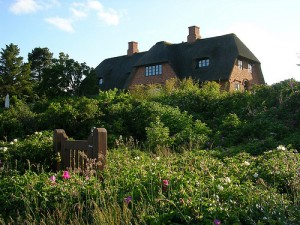
The homes in Kampen have roofs made of reed, which is traditional in northern Germany.
That doesn’t include the side trip to see some of Germany’s most expensive homes, in Kampen; we ended up on the mainland side of Sylt before heading back to the sea side, thus crossing the island’s width twice. We ate our yummy fish sandwiches, stopped for coffee and creamy cakes once. Walking so far on the rough sea was an incredible experience, but by 8 or 9 p.m., dragging my exfoliated feet and licking salt off my lips, I declared that I would walk no further unless someone put dinner in my belly.
Even after dinner (more of the tasty tiny shrimp with a huge organic salad) we had an hour-long walk/run to make the midnight train out of Westerland. When we arrived back at our flat after 1 a.m., I wasn’t sure how I’d manage to get up at 7:30 to make it to our walking tour to the hallig of Oland. But if I wanted to walk to an island–and I did–I had no choice.
*This summer, I’m conducting a work/play experiment in the Alps. I’ve moved my home office from Colorado to Chamonix, a lovely but sometimes insanely touristy town at the foot of Mont Blanc. This post is the fourth in a series about temporarily living and working in a premiere trekking and climbing destination–and another country.

